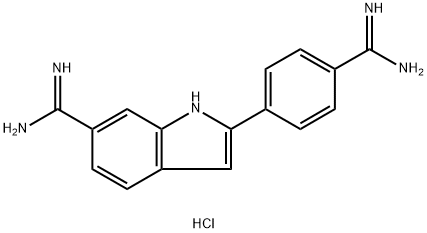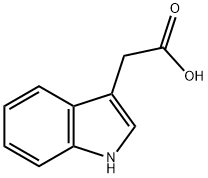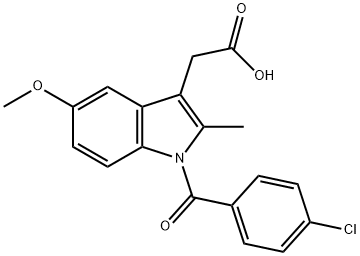A6972658
4',6-Diamidino-2-phenylindoleDihydrochloride , 10mMinDMSO , 28718-90-3
Synonym(s):
DAPI dihydrochloride;DAPI Dye;DAPI Stain;DNA Content Counterstain;2-(4-Amidinophenyl)-6-indolecarbamidine dihydrochloride
CAS NO.:28718-90-3
Empirical Formula: C16H17Cl2N5
Molecular Weight: 350.25
MDL number: MFCD00012681
EINECS: 249-186-7
| Pack Size | Price | Stock | Quantity |
| 1ml | RMB495.20 | In Stock |
|
| others | Enquire |
Update time: 2022-07-08
PRODUCT Properties
| Melting point: | >300°C (dec.) |
| storage temp. | 2-8°C |
| solubility | H2O: 10 mg/mL heat or sonication may be required. Solutions stored in the dark at room temperature or 4 °C should be stable for 2 to 3 weeks. |
| form | powder |
| color | Clear |
| PH | 4.0-5.0 (10g/l, H2O, 20℃) |
| Water Solubility | water: soluble |
| ε(extinction coefficient) | 30 at 263nm in H2O at 1mM |
| λmax | 358 nm, 342 nm |
| BRN | 4894417 |
| Stability: | PROTECT FROM LIGHT! Stable for 2 years as supplied. Solutions in DMSO may be aliquoted and stored at -20°C for up to 3 months. |
| Biological Applications | Nuclear apoptosis assay; targeting drug to cerebral neuron; treating amyloidosis,neurodegenerative diseases,Alzheimer’s disease,Down’s syndrome,type II diabetes; monitoring bioaerosols |
| InChIKey | FPNZBYLXNYPRLR-UHFFFAOYSA-N |
| CAS DataBase Reference | 28718-90-3(CAS DataBase Reference) |
Description and Uses
DAPI is a fluorescent probe which is commonly used to stain DNA and chromosomes for fluorescent microscopy and flow cytometry applications. It forms a fluorescent complex by attaching in the minor groove of A-
Suitable for
- DNA staining in agarose gels
- analysis of changes in DNA during apoptosis
- detection of mycoplasma
- photofootprinting of DNA
- immunofluorescent staining of cells
DAPI has been used:-
- in rapid monitoring of microbial contamination
- in chromosomal banding technique
- in detection of apoptotic cells
- in fluorescence microscopy to track the DisA (DNA integritiy scanning protein) movement on Bacillus subtilis DNA
- to stain mature pollen grains(0.5 mg/ml)
Safety
| Symbol(GHS) |  GHS07 |
| Signal word | Warning |
| Hazard statements | H315-H317-H335 |
| Precautionary statements | P261-P264-P271-P272-P280-P302+P352 |
| Hazard Codes | Xi,Xn |
| Risk Statements | 36/37/38-20/21/22 |
| Safety Statements | 26-36-24/25-22-37/39 |
| WGK Germany | 3 |
| RTECS | NL5995050 |
| F | 3-8-10-21 |
| HS Code | 29339900 |



